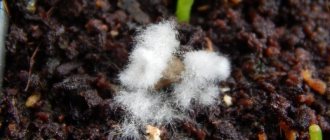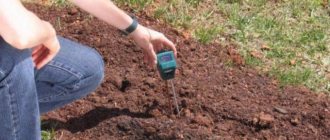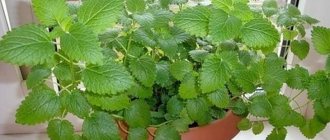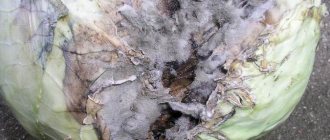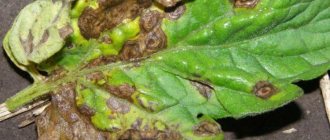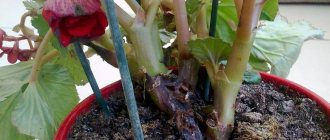White plaque on the ground in flower pots, how to get rid of it. Why does the ground become covered with a white coating?
White plaque on the ground in a flower pot is a common problem that owners of indoor plants struggle with. This phenomenon can have a dual origin. The white coating may be a result of poor water used to water the plants or may be caused by developing mold. Check out these two reasons for the appearance of plaque on the ground in a flower pot and learn how to get rid of white plaque.
White coating on the ground from water
Basically, there is a white or yellow coating. The reason for this is that the water we water the plants with is too hard. The sediment that is visible on the surface of the earth is calcareous sediment. There are several ways to deal with this. First of all, you should stop watering your plants with water taken directly from the tap. Water for irrigation should stand for at least a day.
In addition to using settled water, we can water the plants with water with the addition of citric acid (half a teaspoon per 1 liter of water), this should neutralize lime compounds. If you don't want to use citric acid, you can purchase a water softener from your garden center. In this case, follow the dosage instructions on the package.
Mold on the ground in a flower pot.
Often, a white coating on the soil in a flower pot is not due to too hard water, but as a result of the appearance of mold on the soil in the pot. How then to distinguish one raid from another? So, mold on the ground in a pot looks like a fluffy, soft shell has covered the surface. In fact, it is a mold, often with a large number of spores.
A common cause of fungus appearing on the ground in a flower pot is too intense watering, which significantly increases soil moisture. If the temperature is high and the room is not ventilated and lit, we will create ideal conditions for the development of mold on the ground in the flower pot. This is a much more dangerous phenomenon for our plants than plaque formed from excessively hard water, since mold in a flower pot is harmful to plants.
So how can we fight mold on the ground in a flower pot?
First, you must reduce your watering. You need to let the top layer of soil dry out a little. The plant should be moved to a brighter place and the room should be ventilated regularly. It is also advisable to treat the soil surface with a fungicide (antifungal agent). The drugs Sarfun (Sarfun 500 SC), Topsin (Topsin M 500 SC) can help here.
Preventive measures
Using these tips, you can avoid the appearance of a white coating on the surface of the soil in flower pots:
Be more careful about watering. Do not start a new one while the top layer of soil is still wet from previous watering. Otherwise, you will simply oversaturate the soil with water and it will begin to stagnate. All this will lead to negative consequences for the flower;
Provide your plant with good drainage. To do this, the pot must have special holes at the bottom - this will help avoid stagnation of water in the container. Otherwise, it will lead to the appearance of fungus and mold. Also, before laying the soil, it is necessary to put a layer of expanded clay on the bottom of the container;
- Do not forget to periodically loosen the soil in the pot. This will make it more permeable to air, making it easier for the plant to breathe;
- For preventive purposes, it is recommended to water the soil with a solution of potassium permanganate once a month. This is to disinfect the soil from manifestations of the fungus;
- Don’t forget to regularly ventilate the room where the plants are located;
- The soil for planting must be of high quality; it is better to buy it ready-made in the store. But pay attention to the composition and its main purpose - the soil for seedlings is not suitable for adult plants;
- Use expanded clay as mulch. If it is not there, then you can replace it with river sand, or, in extreme cases, charcoal.
Now you have found out the reason for the appearance of white plaque in flower pots. Most of these reasons are associated with incorrect agricultural techniques, this is especially typical for beginning gardeners.
Therefore, if you provide your flower with proper care and the required conditions, you can easily avoid the appearance of plaque on the ground in your pots. And you can grow a wonderful, beautiful, and most importantly healthy flower.
Currently reading:
- Choosing cucumbers for open ground according to your preferences
- Proper cultivation of Adenium succulent with your own hands
- Description of 12 types of late cabbage varieties for planting
- Three methods of propagating and replanting a dollar tree
Popular: Three ways to effectively control ragweed
Share the news on social networks
About the author: Lyudmila Vasilievna Nosikova
Agronomist of the state agricultural enterprise "Garovskoe" of the Khabarovsk region of the Khabarovsk Territory.
Red coating on the ground. White coating on the beds is a danger signal
Have you noticed that the soil in the garden bed is covered with a white coating? Urgent action must be taken! This is a sign that there is something wrong with the soil. Plants planted on such soil will feel bad and are unlikely to produce a good harvest. In this article you will read about the 2 main reasons why the ground may become covered with white scabs, and what to do about it!
Photo of the problem
Reason 1. "Strangers"
Sometimes the cause of white plaque lies in the contamination of the soil by pathogenic microorganisms - primarily mold fungi. If you touch the white spots, they will not be hard, but soft, vaguely reminiscent of cotton wool or cobwebs.
Characteristic picture
Mold plaque is dangerous because among fungi there are many species that can harm the growth, development and fruiting of plants. For example, late blight is nothing more than brown rot - a fungal disease. If the garden bed has a fertile environment for the development of fungi, it will be a matter of time before the plant becomes infected. Therefore, urgent measures need to be taken.
Important ! A habitat suitable for the rapid growth of fungi is also liked by plant pests in the garden. For example, the ubiquitous spider mite and onion fly.
moldy ground
What to do? The main reason for the active development of fungi is high humidity. They don't live on dry land! Therefore, reduce watering. To understand when to water your garden, be sure to take into account the dryness of the soil, the weather, and the preferences of the crop that grows on it.
If a white coating appears on the ground in the greenhouse, be sure to ventilate the greenhouse every day! This will definitely be beneficial: musty air is a fertile environment for the life of all kinds of microorganisms, arthropods and pests that cause plant diseases and can destroy the crop.
This is important: Have fungi settled in the beds? Be sure to till the soil thoroughly after harvesting. For example, a solution of potassium permanganate is suitable for this!
Are you familiar with the problem of white residue on the soil in your garden? Please share your experience or opinion in the comments at the end of the article. Help other readers
Reason 2: Water for irrigation is too hard
I know from my own experience that poor water for irrigation is the most common cause of whitish plaque on garden soil. Unfortunately, not every one of us can boast of living in a region with high-quality tap water. I'll be honest: in my Tver region it is simply terrible!!! And water from ponds also cannot always boast of an ideal composition. But what is the relationship between water quality and stains on the ground?
A sad example...
So, white coating is nothing more than salt deposits in the garden bed. They are not absorbed by plant roots because they simply do not need such chemicals. And they can even be harmful, causing a deterioration in the appearance of plants and reducing fruiting. I wouldn’t want to... Water should contain as little salts as possible!
What to do? Simple remedies will help improve the composition of water for irrigation:
- settle the water;
- Try watering with rainwater.
Signs of appearance
In order to understand what kind of plaque is on your plant, you need to examine it. A white coating may appear on the leaves - this is generally the first sign of damage to the plant by powdery mildew. Powdery mildew develops well in high humidity.
Powdery mildew is considered a disease of garden plants. But it can also be found on indoor plants.
The spread of this disease to indoor plants can be caused by the soil used for planting. If you worked in the garden, you could have carried it on your clothes or shoes. Ficus trees are especially sensitive to this disease.
But white bloom can also be a sign of pest damage to the plant. On house flowers, a white coating like cotton wool can be caused by mealybugs. This pest also creates a sticky coating on the leaves of indoor plants. It manifests itself differently on different indoor plants.
With any attack by this pest, the plants become covered with a white coating, subsequently the plant becomes covered with a sticky coating, the shoots are bent, growth stops, as this pest sucks out the juice and covers the leaves with a sticky coating. This significantly reduces the ability of any plant to develop and grow fully.
Less commonly, but it is possible, there may be aphids, a large accumulation of these pests can form a plaque on the plant.
Having understood the reason, it is necessary to begin the prevention, treatment and destruction of pests and diseases.
There may also be a white coating on the soil - this is the main sign of a fungal disease, and this occurs due to excessive watering and poor drainage in the pot with the plant.
So, the causes of white plaque on indoor plants can be caused by pests and fungal diseases.
White coating on indoor flowers. White plaque on indoor plants: causes, types and methods of control
Growing indoor plants is a very exciting activity. Flowers can transform even the most unassuming interior and turn a room into a real oasis. Unfortunately, it happens that green pets encounter problems. One of the most common is a white coating on the leaves and substrate.
In our article we will dwell in more detail on the reasons for its occurrence and methods of treating plants for this disease.
Features of the disease
The fungus lives in almost all pots of indoor plants, but its pathogenic activity does not always manifest itself. If a green pet is kept in comfortable conditions and provided with all the necessary micro- and macroelements, then it will not be afraid of diseases. But there are situations when the fungus begins to actively multiply:
- if the room temperature is low at 10-15 degrees;
- with excess air humidity, excessive watering and stagnation of water in the container;
- when the substrate is oversaturated with nitrogen-containing fertilizers;
- when the plant is too crowded in the pot;
- if the flower is rarely watered, allow the earthen clod to dry out, and then irrigate it abundantly;
- any fungal infections spread very quickly and can affect other plants located nearby:
- when you touched a diseased bush and then touched a healthy one;
- if powdery fungal microorganisms have entered the water intended for irrigation;
- When air masses move, the fungus can even move through the air.
Often, plants at home encounter insect pests - their pathogenic activity also often leads to the appearance of spots and plaque on plants.
Causes of the disease
In most cases, a white coating on the leaves of indoor plants indicates they are affected by powdery mildew. It is caused by a microscopic fungus that enters the house with the hair of pets, on people's clothes and shoes. There are also cases of infection through new soil or store-bought plants.
The mycelium spreads at high speed, it parasitizes the green parts and sucks out the vital juices of the flower, causing premature death of the crop. At the initial stage of infection, small spots appear - these are traces of spores. Gradually they grow and completely cover the plant. Over time, the white markings change their color to rusty brown - after which the leaves very quickly dry out and die off along with the buds.
If you do not prevent the growth of mycelium at the early stage of the lesion, then the green pet will die literally in a matter of days.
Most often, powdery mildew develops in rooms with high humidity.
Another common cause of white plaque is the action of mealybugs. This is a microscopic parasitic insect. It is not difficult to notice - at first the plant looks as if it has been sprinkled with flour, and soon the surface of the leaf blades becomes sticky.
Depending on the plant, mealybugs can manifest themselves in different ways:
- it causes a sticky coating on the surface of the dracaena; in the absence of surgical treatment, the leaves begin to fall off profusely;
- the orchid experiences deformation of young shoots and buds;
- on the money tree, plaque accumulates in the axils of the leaves in the form of small lumps;
- in violets, the root system is first damaged, and only then the scale insect spreads to the green parts of the plant.
Rarely, the cause of a whitish coating can be aphids. On a healthy plant, such a parasite is almost invisible, however, the affected area dries out and falls off quite quickly. The fact is that aphids suck all the juices out of the plant, thus depriving it of the nutrients necessary for growth and development. If you do not get rid of the insect in time, the death of the green pet will occur as soon as possible.
Often the white coating does not appear on the green parts of the plant, but on the substrate. The cause may be a special type of fungal mold, which is typical for indoor plants, or efflorescence, that is, salt deposits. Both are detrimental to domestic plants, especially young ones, since both microorganisms and excess salts lead to the death of the entire root system.
The causes of such problems may be:
- excessive watering - it creates an environment favorable for the proliferation of pathogenic microflora.
- The air in the room is too dry - it does not cause mold to grow, but it causes the substrate to dry out, as a result, salt begins to appear on the surface of the soil.
- The pot is too large - in this case, the roots of the flower do not reach the lower layers of the earth and do not take water from there. Thus, stagnation of moisture occurs in the container and ideal conditions are created for the activation of fungi.
- White spots may also indicate damage to the soil in the container by sciarids - fungus gnats. If there are too many of them, then it is better to transplant the flower into new soil.
Causes and symptoms
White coating on houseplants can be caused by a fungal disease or a pest that can create a white coating on the plant. If you care for your plants properly, pests or diseases will be kept to a minimum. But a situation may arise where diseases and pests can harm your plant.
- – a decrease in temperature below optimal conditions, usually below 10 degrees.
- – excess moisture in the pots or high humidity can cause diseases.
- – excess nutrients. Increasing the permissible norm of nutrients (fertilizers) can contribute to the development of diseases.
- – the reason for the deterioration in appearance may be the fact that the plant becomes cramped in its own pot. In other words, he has outgrown it.
- – violation of the watering regime (severe drying or excessive watering).
- – fungal diseases can be airborne (spores) or may be contained in irrigation water.
Any violation of the conditions for growing indoor plants reduces immunity and opens up the possibility of damage by pests or diseases.
Why does the soil in a pot become covered with moss? Mold control methods
If mold appears in the ground and smells rotten, then it is necessary to adjust the plant’s watering schedule. It is recommended to reduce the frequency of watering and reduce the volume of liquid. Some plants just need moist soil. Otherwise, the roots may begin to rot, leading to fungal infections.
With abundant but infrequent watering, it is necessary to systematically loosen the soil. Moreover, deep layers must be affected. But you should be careful, as you can damage the root system.
How to get rid of mold in flower pots without harming the plant:
- If fungus is detected, it is necessary to remove the outer layer of soil from the flower pot. If this is not done, the infectious fungus will begin to spread to the inner layers, which will lead to rotting and death of the flower.
- Next, you need to moisten the lower layers of soil. To do this, pour a glass of water with citric acid diluted in it into the pot. The acidic environment prevents the fungus from multiplying, which has a beneficial effect on the growth of the flower.
- The removed layer should be replaced with new soil. It is necessary to add bactericidal agents to it, which will also act as filter components for incoming moisture. It is recommended to use additives such as crushed sphagnum moss and charcoal pieces.
- Next, the ground is watered with a special composition of foundation: 2 grams of the product must be diluted in 1 liter of water. If the infection spreads to the plant itself, it should also be treated with a solution.
In order for soil cultivation to have an effective result, it is periodically necessary to loosen its top layer. This will lead to an even distribution of moisture and prevent stagnation.
If the soil in the pot is covered with white mold, then it is necessary to water the plant with a solution of water and citric acid at least twice a month. For 1 glass of liquid, take 0.5 teaspoon of acid.
Transplanting a plant
If mold appears in a flower pot, how to get rid of it quickly and effectively? An effective way to eliminate a fungal infection is to transplant the plant into a new pot and completely replace the soil. The soil should be selected taking into account all the rules for planting. For certain plants, it is necessary to find out the optimal humidity in advance.
Soil disinfection
To get rid of infection and the smell of mold, you can disinfect the soil according to the instructions:
- Separate the contaminated soil from the roots of the plant.
- Remove the soil from the flower pot and transfer it to another container.
- Put the water to boil.
- Pour boiling water over the soil.
- Place the soil on a baking sheet and bake in the oven.
- Wait until the substrate cools down.
- Treat the pot with a special disinfectant. You can also fire the pots with an open fire.
- Return the soil to the pot and plant the flower.
Purchased funds
You can get rid of mold using chemicals. They can be purchased at flower shops.
But when choosing this method, you should consider:
- type of soil;
- plant characteristics;
- degree of spread of the fungus;
- what fertilizers were used to till the soil.
Using the wrong product can have the opposite effect. And sometimes it is impossible to use chemical reagents to eliminate moldy stains.
Preference should be given to organic preparations that affect the soil and make it unfavorable for the development of fungus.
The solution depends on the problem
Before taking action, you need to understand what mistake was made in caring for the flower. Hard water can be softened with citric acid in a proportion of 0.5 teaspoon per 1 liter of water. If the flower is planted in a pot that is too large, it should be replaced with a container of suitable capacity.
Purchased soil is often oversaturated with fertilizers, which also leads to the deposition of salts on the surface. In this case, the top layer of soil must be removed and a regular leaf substrate added instead.
Special preparations will help cope with fungal spores. It is necessary to treat the soil with foundationazole in a ratio of 2 g per 1 liter of water. If affected by rot, the flower must be transplanted into fresh soil treated with a fungicide.
It is recommended that all soil, even purchased in a store, be calcined before use. It is convenient to do this in a microwave oven.
It is useful to loosen the soil frequently to provide the roots with access to oxygen. If the soil is too heavy, then replanting into a loose substrate or partial replacement of the soil directly in the pot is necessary. It must have drainage holes.
White plaque in flower pots. Why does mold or white residue appear in flower pots?
First of all, mold in a pot appears due to mistakes in caring for a houseplant:
— Mold is caused by overwatering. Many gardeners are afraid to dry out their indoor flowers and water them often and abundantly. In constantly damp soil, mold grows quickly. Water indoor flowers after checking the soil; its top layer should dry 2-3 cm before the next watering, then there will be no mold.
— Another mistake is watering a little, but often, so that only the top layer of soil in the pot gets wet. Consequently, the roots at depth do not get moisture, the plant looks dried out, and mold grows on the surface of the earth and efflorescence appears.
Properly watering a houseplant is necessary with small portions of water several times at intervals of 5 minutes until water appears from the drainage holes, which means the lump of earth is completely saturated with moisture and you can take a long break before the next watering.
— Mold and white coating appear due to stagnation of moisture in the soil, this happens if there are no drainage holes in the bottom of the pot, there is no drainage layer to drain excess water in the soil. Any leaked water into the tray must be drained after watering.
— A white coating appears on the surface of the earth when watering with hard tap water; salts, along with watering, enter the soil, and then, when moisture evaporates from the surface, they are converted into crystals.
— Mold and white coating provoke the application of excessive doses of fertilizers, undeveloped mineral substances by the plant appear on the surface of the soil, and an excess amount of nutrients leads to the violent growth of mold.
— Mold and white coating appear if the plant is planted in a pot that is too large; its roots cannot absorb the entire volume of soil and draw moisture and nutrients from it. Over time, unused soil becomes salty, sour and moldy.
— If you bought land and it is already moldy, then you cannot sow seeds or plant seedlings in it, or replant young plants, since mold can spread to fragile roots and stems, and as a result, the seedlings or seedlings will die.
Types of deposits on the ground
A limescale deposit often forms on the soil surface around the edges of the flower pot, which has a bad effect on the growth and development of the plant. It looks depressed and begins to shed its leaves. Salt deposition most often occurs due to irrigation with unsettled water, which is hard and requires neutralization of alkalis.
Another reason is the wrong pot size. The roots of the plant will not have time to absorb moisture; it will protrude to the surface of the soil and produce a white precipitate.
Low temperatures and abundant watering can cause the formation of mold and fungal diseases of the flower. If the roots begin to rot, the plant will die.
With excessive watering, soil particles are washed out of the ground along with useful substances. The chemical composition of the soil changes, which negatively affects the general condition of the plant.
Yellow coating on the ground in flowers. Frequently Asked Questions: Ground Raid
- 1. Where does the white coating on the ground come from? The land was purchased from a store. Why does plaque appear on some pots and not on others? What is the reason and how to fight it?
- The mechanical composition of the soil is too heavy. As a consequence, its high capillarity and intensive drawing of water to the soil surface.
- Difficult drainage at the bottom of the pot and, as a result, evaporation from the soil surface as the main route of water consumption.
- Mistakes when watering: poor watering, when the amount of water applied per watering is only sufficient to wet the surface layer. Watering can be rare, but should be plentiful, flushing the entire soil mass.
- Over-fertilized soil mixture. Many of their manufacturers are guilty of this, especially when preparing mixtures for vegetables. In general, this is a problem when you use store-bought formulations. For some reason, manufacturers for the most part are confident that a fertilized soil mixture from the heart is a virtue. It’s as if they don’t know that all transplants are only done in an unfertilized environment! The next careful fertilizing is only after obvious signs of rooting.
- Violation of the principle of correspondence between the volume of soil in the pot and the assimilative capacity of the roots of a given plant. There should not be significant volumes of soil not developed by the root system. Otherwise, again the predominance of physical evaporation over transpiration.
- Errors in dosing fertilizers (overdose), as well as applying fertilizers during the dormant period of the plant. For some reason, current manufacturers began to recommend solution concentrations of 2 g/l or more. This is not true. In general, a guaranteed non-toxic concentration can be recognized as 1 g/l, and for certain groups of plants (ferns, orchids) 0.5 g/l and even 0.1 g/l.
- And of course, the notorious softness of irrigation water. Look at its quality everyone in your city. If the amount of water required for irrigation is insignificant, you can use filtration using some sophisticated filter with an ion exchanger: it will remove chlorine, calcium, magnesium, and, for example, add useful potassium. But this is not for bucket volumes - it’s expensive. Oxalic acid is a reliable softener, but litmus testing is required, because The initial content of Ca and Mg in water is generally unknown.
- Dry air. Dry air strongly stimulates physical evaporation, which again leads to the removal of salts to the soil surface. Salts supplied with water from the soil remain in the leaves after it evaporates - this is the normal mechanism of mineral nutrition. But with increased evaporation, excess salts accumulate in the leaves, and over time their concentration rises to dangerous levels. In dry air, evaporation from the surface of the soil is also high, and salts also accumulate there. Soil salinity occurs (in the form of deposits on the soil surface), which provokes plant diseases. In the room where flowers grow, air humidity must be constantly monitored and regulated. This is why there is no salt crust with “bottle” culture, in various closed greenhouses and greenhouses. However, raising the air humidity in an apartment is an even more dreary task than cleaning irrigation water.
Answer: A white or white-yellow salt crust on the surface of the soil mixture in a pot appears due to the predominance of purely physical evaporation of water from the soil over transpiration by the plant. There are several reasons.
Why is this raid dangerous?
The appearance of mold or salt on the ground does not threaten the plants with death. But this problem will definitely affect the quantity and quality of the fruits obtained.
Increased soil moisture is a favorable environment for the development of fungal infections and diseases (late blight, clubroot, macrosporiosis, downy mildew, etc.), as well as for the appearance of harmful insects (wireworm, cabbage fly, spider mite, mole cricket, etc.).
The formation of plaque on the ground is dangerous only for young seedlings. It does not have a sufficiently developed root system to absorb excess moisture. Therefore, when spraying appears, the seedlings will most likely begin to rot. And the resulting mold impairs the regeneration of the crop and reduces the amount of oxygen supplied to it. Most often, the development of fungus around young planting material leads to its rapid death.

